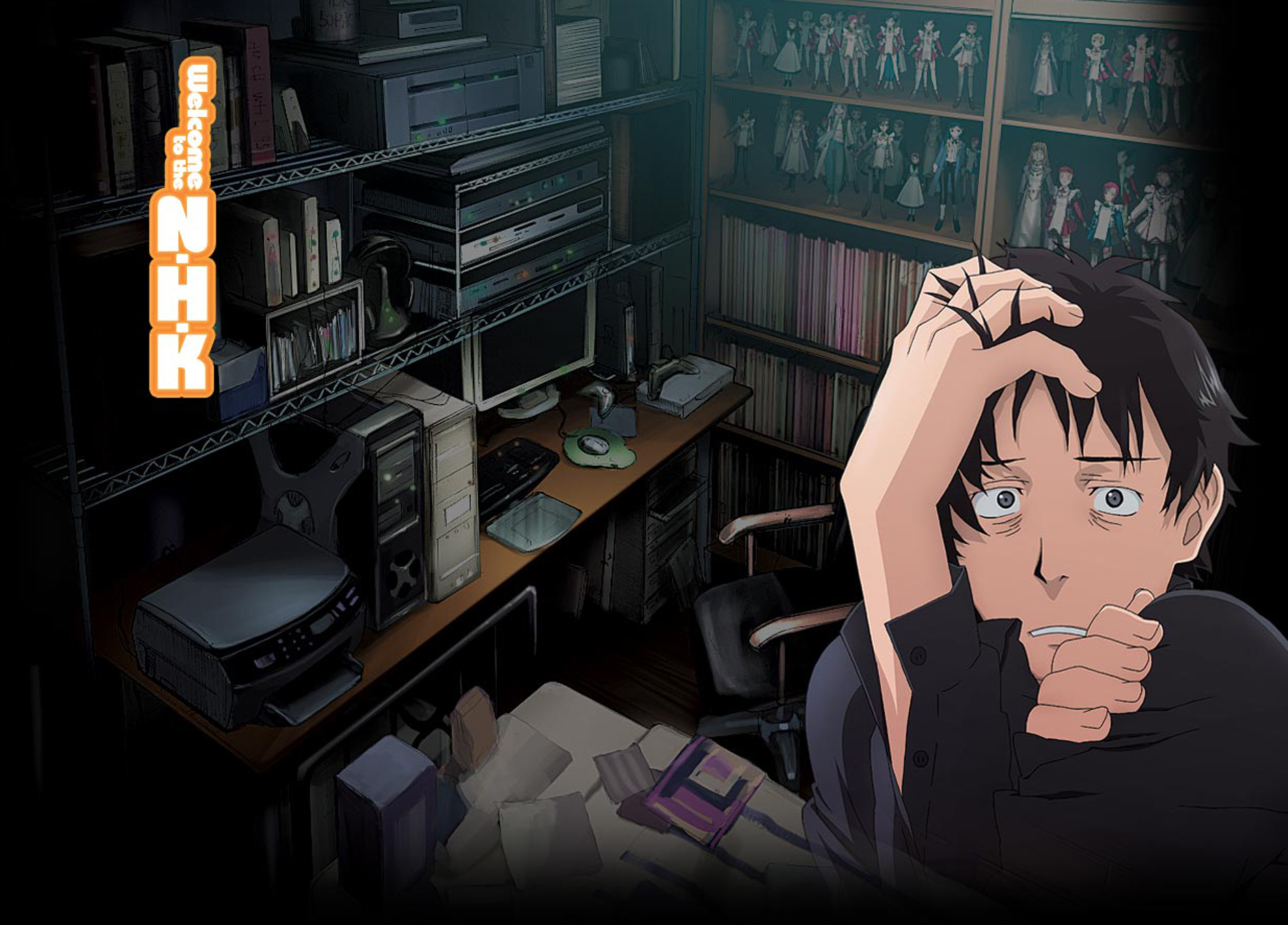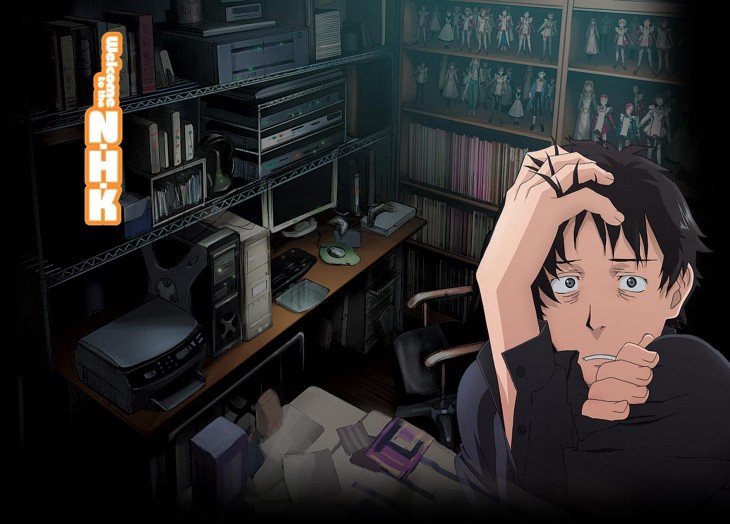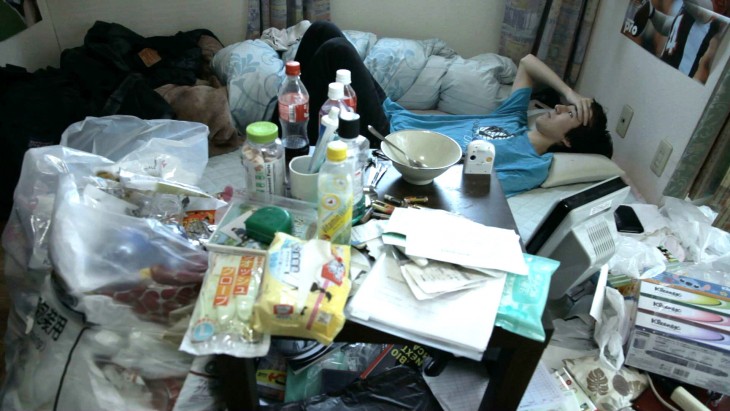Andy Price has been to Japan over 25 times exhibiting as an artist. The following article is based on conversations and facts gleaned from his time there talking to people and travelling to little known places.
In recent years across Japan, a silent holocaust lurks behind a million shutters as legions of young people choose a life of isolation in their rooms rather than face the stress of public life. These people are known as the Hikikomori (meaning one who shuts himself away).
This particular story starts on a typical hot and humid July day in outer Tokyo. The workers have boarded the trains on their long commutes and the children are at school. The suburban streets have passed over to the housewives and the elderly going to the various shops and social groups inside the clean homogeneous buildings. Cicadas trumpet a discordant backdrop to a group of children walking in unison.
They are being trained for the most important lesson in life, namely their personal subjugation to the group. They are learning to knock away the square edges of their individualism to fit the round hole that is corporate Japan.
This trait to conform is something anthropologists believe had its origins in rice farming which demands a complete social integration of purpose as a matter of life and death.
http://gty.im/178330666
There is an occasional brutality to this end which Westerners sometimes find irrational and cruel. Teachers and even parents turn a blind eye to bullying as a viable tool to coerce the out-of-step pupil or worker to conform. Sadly, the weak minded, the eccentric and the sensitive are also subjected to these psychological pressures with sad outcomes.
Enter Mrs Otani on her way home from the local mall. Feeling defeated and tired, she remembers the promising and lost career that she was expected to give up after her first child. Life at home is tense. Her exhausted and uncommunicative husband usually does no more at weekends than slump in a chair, drink beer and watch TV in silence.
He has never taken much interest in the emotional landscape of the family. Lonely, isolated and consumed with a sense of failure, Mrs Otani plods on with a single task that she is unable to ignore despite the strain it puts on an already fractious marriage. Every day she is driven through shame and obligation to provide for their only son Katsuro who, now a young adult, has remained unemployed and shut away in his small room for the past 5 years. Such is her pride that she will not seek professional help nor tell the neighbours, preferring the lie that Katsuro is away at college.
Katsuro, like many Hikikormori are largely enabled by the strong cultural dependency between mother and son (amae). This smothering connection originally exists to counteract individuation where in adulthood this dependency shifts from mother to the corporate grouping.
Komatsu’s tale is typical. A sensitive boy at school, he soon became bullied and was sent to Coventry – Mushi . Deeply troubled it was not long before he became one of the staggering 2% , the futoku, or people who refuse to attend class. An average Japanese pupil who is bullied misses up to 2 years of education.
With the long standing Japanese recession, the need for good grades to achieve the annual corporate recruitment rounds grow ever more competitive. For Katsuro, flunking this critical selection process means an immediate (if not permanent) future in dead end jobs.
Katsuro says; “I seem to think more than most people I guess, I have this feeling that I don’t fit in anywhere, I feel if I go outside I have to kill my own voice”
How often do we hear this angst from teens all over the world that might for a few years join various sub cultures as a bridge to self-actualisation. In these groups they may develop confidence and sociability at a crucial formative time of personal identity. Sadly, in Japan, a profoundly alternative lifestyle is almost impossible. In this sense, it is not the Hikikomori that reject society but society that rejects them. The sufferers are caught in a web of psychic insolubility and often intense anger. This social problem exists nowhere else on such a scale outside of Japan. Such isolation breeds degeneracy in mental and physical health and yet despite such suffering Mrs Otani will avoid seeking help for her son.
It’s only recently that Japan’s social services are beginning to recognise the Hikikomori. Various outreach tools including the promotion of propagandist anime are used as a means to penetrate an otherwise closed world. One hopes for the sake of the nation that this problem is addressed soon because the mothers and the suffers are not getting any younger and more youths are joining the ranks.
Further reading: Shutting out the Sun by Michael Zielenziger. Vintage Departures
©Andy Price 2015


